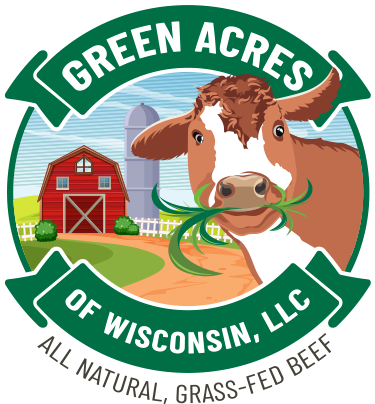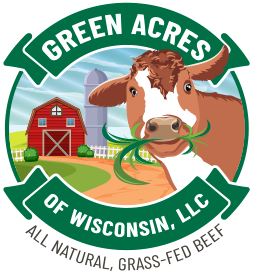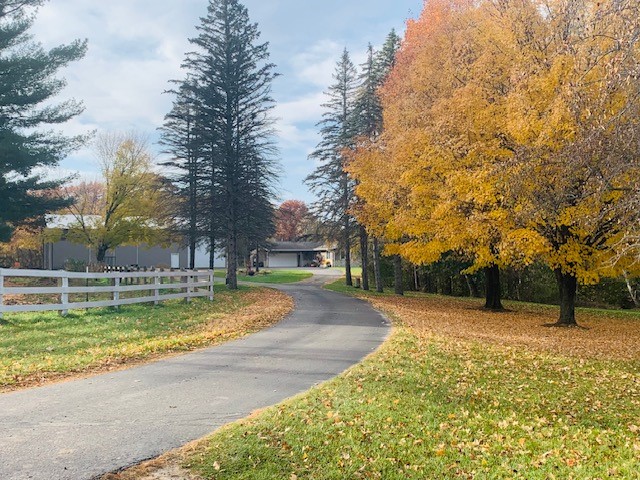GREEN ACRES OF WISCONSIN MISSION

Our mission as a small, family farm is to provide high-quality beef that is 100% grass-fed and raised all naturally with honesty and great care for our animals.
– Jeff & Denise Vick
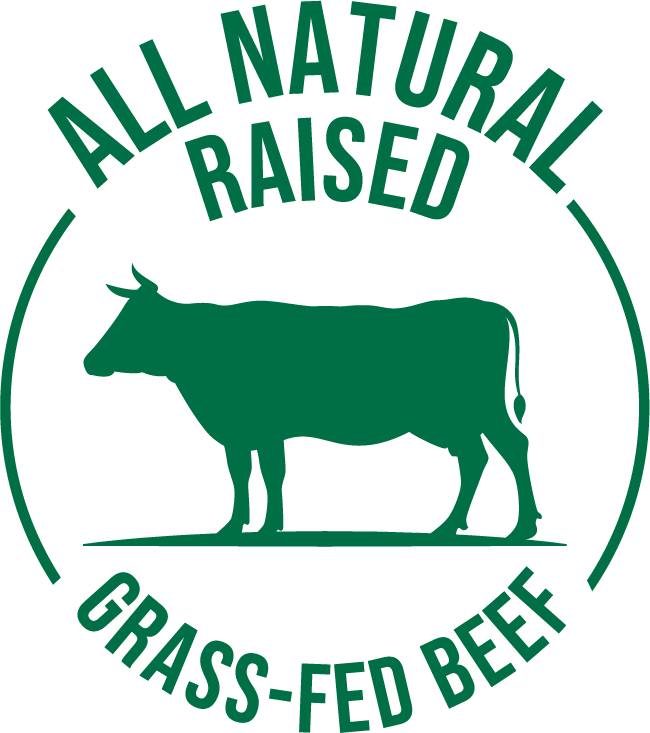

OUR STORY

Jeff and Denise Vick started Green Acres of Wisconsin in 2017 located just outside of Menomonie, WI. Once we became “empty nesters” in the summer of 2017, we decided to purchase a small farm in northwest Wisconsin that would enable us to start up our small business of raising grass-fed beef all naturally for family, friends and our local community. We are Wisconsin natives and both have a family background in farming and raising animals with our parents’ family farms they grew up on still in operation today. We both share a love for animals and the outdoors and have been blessed to be able to live in a beautiful location next to the Red Cedar River.
We started with 15 head of cattle purchased from the Tieman (Denise’s Dad) family farm outside of Thorp, WI. We have a “cow/calf” farm with a mixed breed of cattle that are predominantly Angus, Hereford and Normandy. Our farm is designed for grazing beef cattle from May thru October with a custom seed mix of alfalfa, grass and clover. We grow all of our own winter feed with the same grass mix that we use for grazing during the spring, summer and fall. Our beef are 100% grass-fed with no corn or small grains in their diet. We believe this is the way beef cattle were intended to be raised. It takes longer to raise them to a market weight, but we believe it is worth the extra time based on the quality and health benefits of grass-fed beef.
Giving back to our community is one of our top priorities in how we operate Green Acres of Wisconsin. A portion of all proceeds from our beef sales are donated to Stepping Stones of Dunn County charity in Menomonie in the form of regular product donations. Stepping Stones seeks to foster a community that prevents hunger, homelessness, and isolation throughout Dunn County.
Learn how we raise and care for our cattle with the utmost care and respect on this site.
OUR QUALITY BEEF PRODUCTS
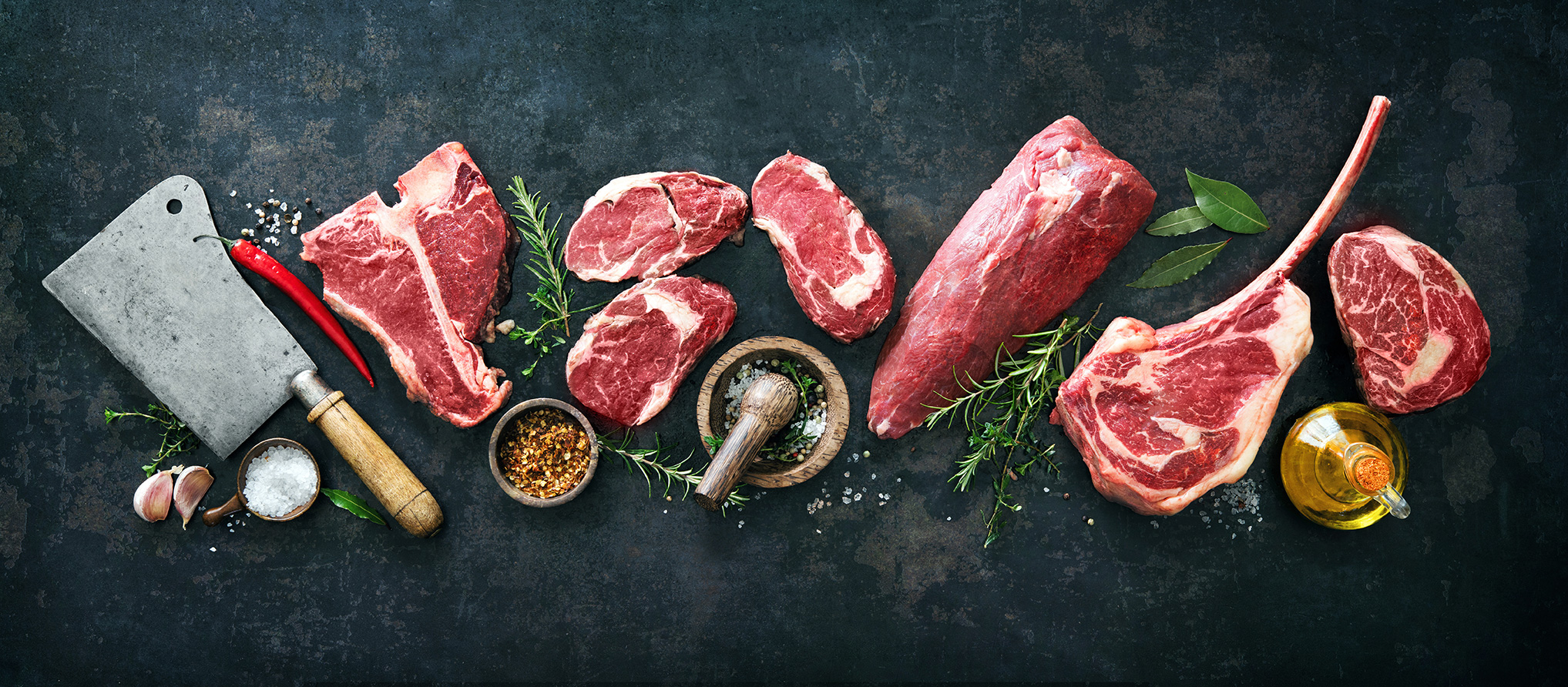
Currently we offer multiple categories of beef products: 1) multiple offerings of ground beef; 2) half sides of beef; 3) quarter sides of beef; and, 4) individual steak and roast select cuts.

GROUND BEEF OFFERINGS
A. 85% Lean Ground Beef – 1# package, frozen and vacuum sealed
B. 90% Lean Ground Beef – 1# package, frozen and vacuum sealed
C. 85% Lean Ground Beef Patties – 1/3# patties, 3 patties/package, frozen and vacuum sealed
GROUND BEEF PRICING
85% & 90% Lean Ground Beef = $7.50/lb
– Buy 5 lbs for $35.00
– Buy 5 lbs or more – price = $7.00/lb
85% Lean Ground Beef Patties = $8.00/lb
– Buy 5 lbs for $38.00
– Buy 5 lbs or more – price = $7.60/lb
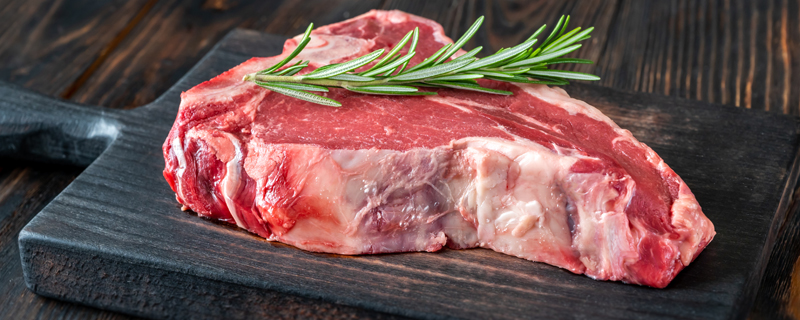
HALF SIDE & QUARTER SIDE OF BEEF
This is a cost-effective option for buying a large quantity of meat at one time. Some of our customers partner with a friend or family member and split the half order. For those interested in a quarter side of beef, we try to bundle 2 quarter side orders together to enable customers to have some volume of all the types of cuts available. The price per pound for half side orders is based on the hanging weight of the animal. Our average hanging weight ranges from 325 to 385 lbs.
Half Side of Beef Pricing = $5.75/lb
(we pay for the processing fee)
Cost Range for Half Side of Beef = $1,870 to $2,225
More details on the “Beef Processing & Pricing” tab

CUSTOM ORDER OPTION FOR CUT SELECTION
You will receive roughly 215 to 255 lbs of packaged meat for each half side order dependent on hanging weight and cut selection. Our meat processor offers the opportunity to custom order your cut selections. They have basic cut options which are included in the $5.75/lb pricing listed above. You can add cuts to the basic cut selection list and reduce the volume of ground beef (e.g. brisket, sirloin tip steak, flank steak, soup bones, short ribs). Some of the additional cut options do have an extra charge (e.g. stew meat, cube steak and ground beef patties).
Here is a list of the other custom order options you have to choose from:
- Thickness of steaks – ¾” or 1”
- Number of steaks per package – min of 2
- Size of Roast – 2 lbs or 3 lbs
We can e-mail you an example of our meat processor’s order form to help you better understand basic cut options and other cut options beyond the basic package.
Please contact us for updated pricing and availability of individual steak and roast cuts.
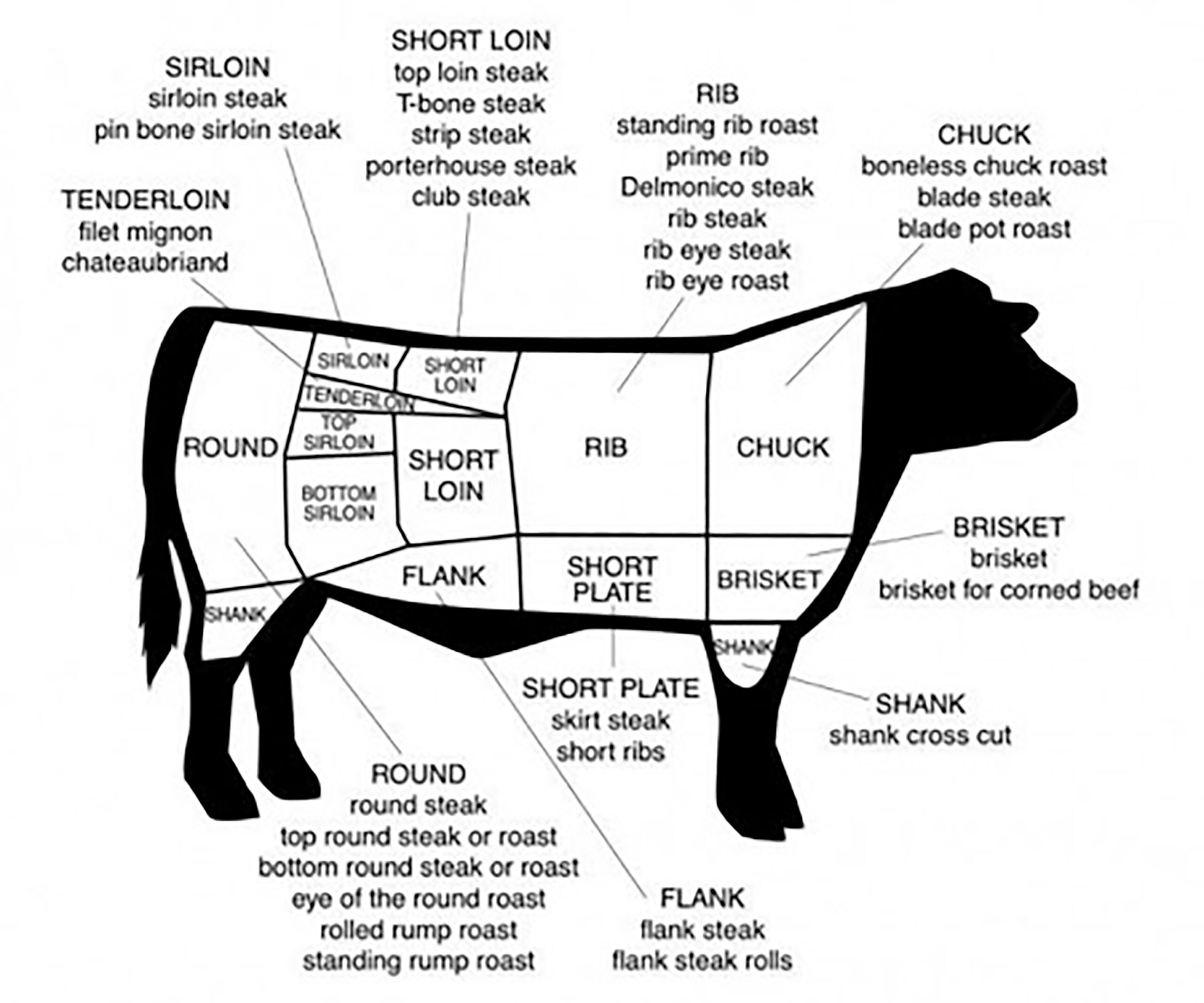
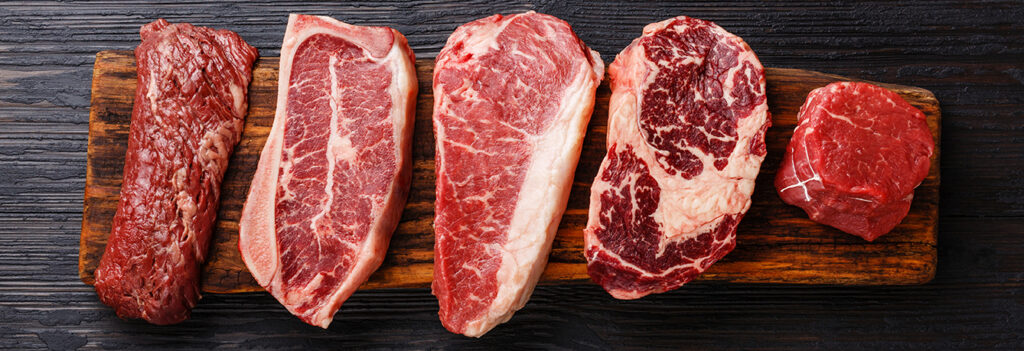
WHY GREEN ACRES OF WISCONSIN

RAISED WITH LOTS OF “TLC”
We take extra care in how we raise our animals which starts with no confinement in feedlots. Our cattle have plenty of green pastures to graze on over the spring, summer and fall seasons with smaller pastures and sheltered areas, that are cleaned on a regular basis, during the winter months. Our cattle drink from the same water supply we do – our well. Clean and fresh water supply year around as opposed to ponds or streams which can cause health issues.
Plenty of head scratches and back rubs are given during the year make for a happy and healthy herd!
RAISED ALL NATURALLY – NO ADDED HORMONES, VACCINES OR SUB-THERAPEUTICS ANTIBIOTICS
We transitioned our farm from conventional to certified organic during the first, 4 years of operation. We decided in 2022 to stop going through the organic certification process due to the rising costs. We still utilize all of the organic practices when it comes to growing our feed supply and our animal care. As part of our “All Natural” program, we do not vaccinate any of our cattle nor do we use any hormones such as estrogen or testosterone which are routinely given to feedlot cattle for rapid weight gain. We do not use any sub-therapeutic antibiotics that can be given at low concentrations over a long period of time, and can be used as growth promoters. We do not use any herbicides or pesticides on our grazing pastures.
Green Acres of Wisconsin goes to great lengths to raise our cattle all naturally relying on genetics, high quality forage and minerals to effectively manage our herd health.
GRASS-FED BEEF = HEALTH BENEFITS FOR YOU AND YOUR FAMILY
Health Food Experts have published the health benefits of grass-fed beef vs. grain-fed beef (which is sold in your local supermarket) through several years of research.
Health Benefits of Grass-Fed Beef are:
A. Less saturated fat and total fat;
B. Lower cholesterol and fewer calories;
C. Grass-fed offer more health promoting fats – such as:
– Omega-3 fatty acids;
– More antioxiodants – vitamin E, beta-carotene & vitamin C.
GOOD STEWARDS OF OUR LAND
Green Acres of Wisconsin is committed to being good stewards of our land by the way we raise our cattle and the care we take with the soil they feed on during the year. We are actively involved in the water and soil preservation programs with the Natural Resources Conversation Services (NRCS.) Part of the NRCS program is rotationally grazing.
During the grazing season, we move our cattle to fresh grass every day. This promotes better soil health by limiting soil compaction and plant growth by allowing time for heathly re-growth our of custom alfalfa, grass and clover mix. We allow a minimum of 30-day intervals between grazing windows in our pastures to enable re-growth and rest time for the soil.
PROCESSING & PRICING INFORMATION

BEEF PROCESSING & STORAGE INFORMATION
WHEN TO EXPECT YOUR BEEF
Our beef is processed only twice a year in late spring – May timeframe and late fall – November timeframe. After your beef goes to market, you can expect it to be ready in approximately 2 weeks. Place your order early by making a $250 deposit as we only have limited annual supply.
HOW MUCH BEEF TO EXPECT
If you ordered a half you can expect to receive about (assuming standard cut selection + 2#’s per roast):
1-2 Rump Roasts, 2-3 Sirloin Tip Roasts, 2-3 Round Roasts, 5-7 Arm Roasts and 10-14 Chuck Roasts.
9-12 Ribeye steaks, 8-12 New York Strips, 4-6 Sirloins, 5-7 Tenderloins (steak weights will vary.) NOTE: you can select T-Bone and Porterhouse steak cuts in place of New York Strips and Tenderloin.
100-150 lbs. of 85% or 90% lean ground beef. You can reduce the volume of ground beef by selecting additional select cut options at no additional costs. Examples are brisket, flank steak, sirloin tip steak, short ribs and/or soup bones.
FREEZER SPACE
When calculating for freezer space, allow for 6.5 – 7.0 cubic feet for a half beef. Chest freezers generally use space better than upright freezers.
COST BREAKDOWN
STEER COST
Meat is sold by hanging weight. This is approximately 50% – 55% of live weight. We estimate that our steers on average will weigh 1,300 – 1,400 lbs., which would be 650 – 770 lbs. hanging weight. We charge $5.75/pound of hanging weight. Half side of beef would then be roughly 325 – 385 lbs hanging weight.
PROCESSING COST
The cost of processing is included in the cost of $5.75/lb hanging weight for the standard cut selection list of our processor. Cut selections outside of the standard cut list do have an extra processing charge (examples: hamburger patties, stew meat, round steak).
TOTAL COST
With these prices in mind, the total estimate you could expect to pay to Green Acres of Wisconsin is: $1,870 – $2,225 for a half side of beef.
ORDER DEPOSIT
We do request a $250 deposit at the time your is order is placed to reserve your beef quantity.
This deposit can be made by Venmo (@greenacresofwisconsin). You can also mail us a check made out to Green Acres of Wisconsin if you prefer. Our mailing address: Green Acres of Wisconsin, E4496 430th Ave, Menomonie, WI 54751.
ORDERING & DELIVERY
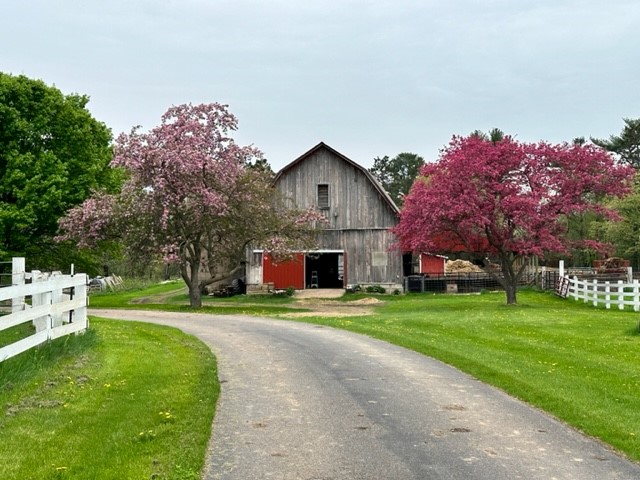
Contact us to place an order, request more information or simply say hello
HOW TO ORDER IN 3 EASY STEPS

CONTACT GREEN ACRES OF WI
First step is to directly contact Green Acres of Wisconsin to reserve your preferred beef quantity (ground beef only, half side or whole)
E-mail: contact@greenacresofwi.com
Phone: 715-235-1433

CHOOSE YOUR CUTS OF BEEF
Work directly with us to determine the cut selection that works best for you. Download the processor’s custom order form. Not sure what to order? Contact Green Acres and we’ll provide guidance on cut selection based on your unique preferences.

SCHEDULE DELIVERY OF YOUR FRESH LOCAL BEEF
After processing is completed, your custom beef order will be packaged, frozen and ready for delivery. Delivery costs may be additional dependent on your location. We currently service the Madison, Milwaukee and St. Paul/Minneapolis areas.
COOKING THE CUTS

12 TIPS FOR COOKING GRASS-FED BEEF
TIP #1 – USE A MARINADE
Very lean cuts like New York strips and sirloin steaks can benefit from a marinade. Choose a recipe that doesn’t mask the flavor of the beef, but will enhance the moisture content. For safe handling, always marinate in the refrigerator.
TIP #2 – ADD FAT
Because grass-fed beef is typically lower in fat than conventional meat, you can coat it with fat such as grass-fed/pasture-raised butter, tallow, lard or duck fat for easy browning. The fat will also prevent the meat from drying out and sticking to the cooking surface.
TIP #3 – THAWING
Never us a microwave to thaw grass-fed beef. Either thaw in the refrigerator, or for quick thawing place the vacuum sealed package in cold water for a few minutes.
One pound of ground beef takes about 24 hours to thaw in the refrigerator, and a 3 or 4-pound package may take up to 48 hours to defrost in the refrigerator.
TIP #4 – COOKS FASTER
Grass-fed beef cooks about 30% faster than grain-fed beef. Use a thermometer to test for doneness and watch the temperature carefully. You can go from perfectly cooked to overdone in less than a minute.
The meat will continue to cook after you remove it from the heat, so when it reaches a temperature ten degrees lower than the desired temperature, it’s done.
TIP #5 – COOK TO MEDIUM-RARE
Grass-fed beef is ideal at rare to medium-rare temperatures. If you prefer your meat well-done, cook it at a low temperature in a sauce to add moisture. A slow cooker is great for this.
TIP #6 – PAN SEARING
Pan Searing on the stove is an easy way to cook a grass-fed steak. After you’ve seared the steak over high heat, turn the heat to low and add grass-fed butter and garlic to the pan to finish cooking.
TIP #7 – GRILLING
When grilling, quickly sear the meat over high heat on each side and then reduce the heat to medium or low to finish. Baste to add moisture.
Use tongs instead of a fork to turn the beef. When grilling burgers, use caramelized onions or roasted peppers to add moisture to the meat.
TIP #8 – ROASTING
When roasting, sear the beef first to lock in the juices and then place in a preheated oven. Reduce the roasting temperature by 50 degrees F for grass-fed beef.
TIP #9 – TENDERIZING
Tenderizing breaks down tough connective tissue. You can tenderize your meat with a tenderizer like the Jaccard, which is a small, hand-held device with little “needles” that pierce the meat allowing the marinade or rub to penetrate the surface.
Alternatively, after coating your thawed grass-fed steak with a rub, put it in a zip-top bag, place on a solid surface, and use a meat mallet, rolling pin or other hard object to pound it a few times. This will not only tenderize the meat, but will also incorporate the rub, adding flavor.
Don’t go overboard and flatten the beef, unless the recipe calls for it.
TIP #10 – BRING TO ROOM TEMPERATURE AND PREHEAT
Bring your grass-fed beef to room temperature before cooking to avoid overcooking the outside. And always preheat the oven, pan or grill before cooking.
TIP #11 – LET REST
Let the beef sit covered in a warm place for 8 to 10 minutes after removing it from the heat to let the juices redistribute.
TIP #12 – STORING BEEF IN THE REFRIGERATOR
Raw ground beef will keep in the refrigerator for about 1 to 2 days; Raw roasts and steaks will stay good in the refrigerator for about 3 to 5 days; Cooked meat will stay good in the refrigerator for about 3 to 4 days.
COOKING WITH GRASS-FED BEEF
You may have heard rumors that grass-fed beef is not as tender as grain-fed, but here’s the real story. Since it’s lower in fat, grass-fed beef runs the risk of drying out or becoming overcooked much quicker than grain-fed beef. So the name of the game is to keep the meat moist, an easy task when you consider the following tips:
• Sub in flavor. Replace the missing fat in grass-fed beef with something juicy and flavorful. When you use ground beef – say, for making hamburgers or meatloaf – combine it with an ingredient that will keep things moist. Chopped onions, shredded vegetables like carrots or zucchini, sundried tomatoes, olives, mustards or grated cheese all work wonders. When it comes to steaks, consider marinating them for 4 to 6 hours before cooking to add a boost of flavor and moisture, too.
• Take things down a notch. Grass-fed beef cooks quicker than its grain-fed cousin, so lower the heat on the stove or grill (or about 50 F in the oven, if you’re roasting) to better control the doneness. Otherwise, it can go from perfectly cooked to overdone in a matter of seconds.
• Preheat, preheat, preheat. Be sure your cooking surface – whether it’s a pan or grill – is preheated well before you start cooking. That way, you’ll accomplish a tasty, even sear without overcooking the meat.
• A little oil goes a long way. Because there isn’t much fat in grass-fed beef, be sure to grease your pan or grill with a bit of oil or cooking spray before cooking to ensure that nothing sticks.
• No poking! Save your knife and fork for eating, not cooking. For the juiciest results, resist the urge to poke or turn meat with a knife or fork. Each time you do, more of its moisture will end up in the pan, not on your plate.
• Think 70%. On average, grass-fed beef needs about 30% less time to cook than grain-fed beef, so go ahead and check for doneness a little earlier than usual.
• Forget well done. Grass-fed beef can get dry, tough and toothsome when overcooked, so it’s best to stick with medium-rare or medium steaks. Our advice? Remove beef from the heat around 140 F – or a little more or less, depending on your taste – and tent it loosely with foil to let it rest. While it sits, the temperature will rise another 5 to 10 degrees. (The pros call that “carryover cooking.”) To check the temperature, insert a meat thermometer into the thickest part of the steak, away from any bones.
FREQUENTLY ASKED QUESTIONS
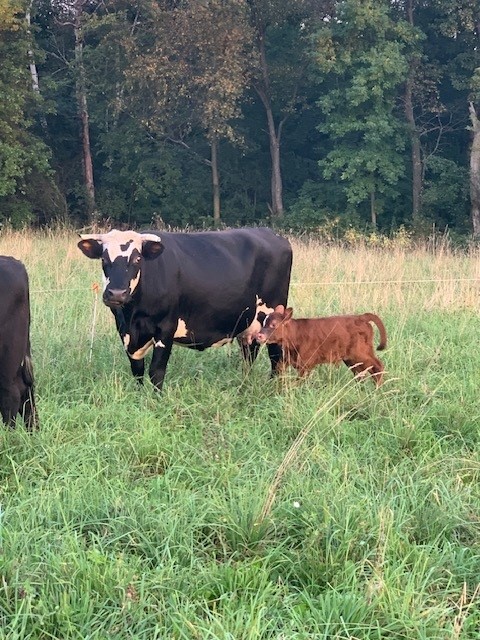
How do you sell your grass-fed beef?
We direct market our beef through this web site and my wife’s, Denise Vick, Facebook page. We sell our grass-fed beef in one-pound ground beef packages, miscellaneous cuts (e.g. soup bones) and half-side orders. Most beef orders are delivered in the late spring (May) and late fall (Nov) time periods. You will not need to contact our processor to complete your beef order, you work directly with us to complete every step of your order. Our prices already include meat processing fees, vacuum sealed, shrink-wrap packaging, and labeling. You will not need to contact our processor to complete your beef order, you will directly with us to complete every step of your order. Your invoice will list the actual weights of each selected cut once your order has been processed and packaged. Please find a list of cuts you can expect to receive when buying one of our half sides of grass-fed beef under the “Ordering & Delivery” tab on this site.
How much freezer room do I need for a half-side order?
A half-side of beef typically varies in size from 225 to 275-lbs in packaged weight (depending on animal size), and requires 6.75 to 7.0 cubic feet of freezer space. A 7-cubic feet chest freezer has 36” in width, height of 34” and a depth of 25”. Many of our customers share a half-side of beef with a friend or family member reducing the packaged weight to roughly 115 to 140 lbs and the needed freezer space to ~3.5 cubic feet per family. A quarter-side of beef is typically enough to feed two adults for one year.
What does All Natural beef mean?
All Natural Beef means that the cattle have no added hormones, vaccines or sub-therapeutic antibiotics and are 100% grass fed and finished. For the first,4 years of raising grass-fed beef, we were certified organic and certified grass fed. In 2022, we decided not to pursue organic certification to help reduce our costs and to share those cost savings through the pricing we provide our customers. We have not changed our farming practices since transitioning from Certified Organic to All Natural. We firmly believe we are raising our cattle the “right way” with a 100% forage only diet with no hormones, vaccines or antibiotics and no chemical usage on our pasture land.
How do you raise your animals?
Since our animals are 100% grass-fed, they are raised on pasture throughout their lifetime. During each year’s growing season we implement a rotational grazing pattern, holistically managing the cattle by moving them to a different pasture every day. This exposes them to fresh grass daily and allows the previously grazed pasture to regrow for approximately 30 days before the animals return to that same pasture. This system requires daily moves of temporary fencing consisting of step-in posts and portable wire reels. With daily exposure to humans our animals are much more docile than herds that roam the “Back 40” all summer long without ever seeing a human face. During the summer the cattle have access to shade and fresh water supply from our well. During the winter months our cattle have access to covered shelter if they choose. Because of their thick coats and their genetics to thrive during Wisconsin winters, they tend to reside outside even on some of the coldest, snowiest days. In summary, our animals are healthy, happy, and very spoiled!
What do your cattle eat in the winter?
In the winter, the beef cattle are fed bales of hay that do not contain chemical preservatives. This dry hay is harvested from our farm and nearby fields. Each winter our cattle outwinter on about five acres of land we select. Instead of the conventional “feedlot” method of feeding them near the buildings on a concrete slab, our cattle are fed baled hay in round bale feeders that are moved across the frozen pasture every few days. During outwintering the cattle deposit their manure across a smaller, concentrated area of pasture, which in turn, produces even greener grass the following summer.
Do they get fed grain?
No. The cattle are not fed any grain. They are grass-fed for 100% of their lives. They eat a custom mix of alfalfa, grass and clover along with high, quality minerals.
Are the animals confined?
No. We do not raise our cattle in a confined feedlot.
Do you vaccinate?
No. We do not vaccinate the beef cattle. We believe that if we are managing the animals correctly and keeping them strong and healthy, they do not need to be vaccinated. This ensures our customers that they are not getting any foreign substance in the meat they purchase.
What is marbling?
Marbling is the intermixture of fat with lean in a cut of meat, which contributes to flavor and tenderness. The Angus, Hereford and Normandy breeds we raise begin to marble intramuscularly at a young age.
How does grass-fed beef taste?
We cannot answer this question because each person has a different sense of taste. We have received numerous compliments regarding our farm’s grass-fed beef. Grass-fed beef is a leaner product than what you would purchase in your local grocery store. To optimize the product quality and flavor of our grass-fed beef, we suggest you review the “Cooking the Cuts” tab on this site for cooking/grilling suggestions.
Do you deliver?
Yes – we currently offer product delivery for beef orders in the Madison, Milwaukee and Twin Cities areas in the late spring and late fall time periods. We currently hold a Retail Food License from the Wisconsin Department of Agriculture which makes our farm’s beef products eligible to be sold both directly from the farm and at your local farmers market. We are planning to have a booth at the Menomonie Farmers Market starting in the summer of 2022.
COMMITMENT TO THE COMMUNITY

Portion of proceeds donated to Stepping Stones of Dunn County, WI.
Stepping Stones – People helping people strengthen the Dunn County community by providing food, shelter and support.
